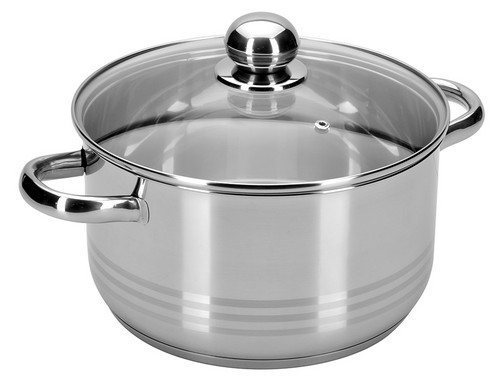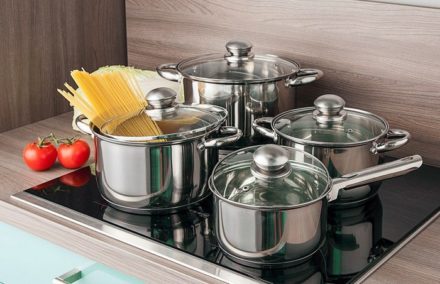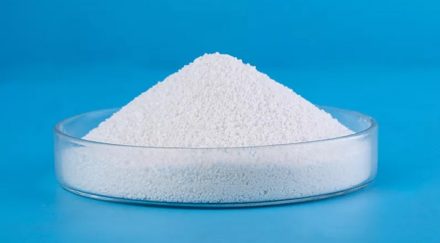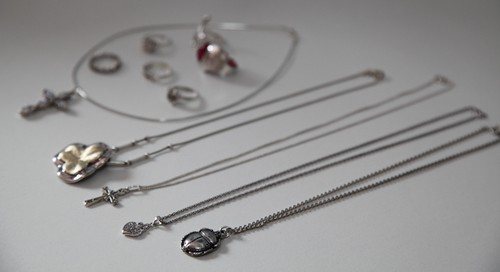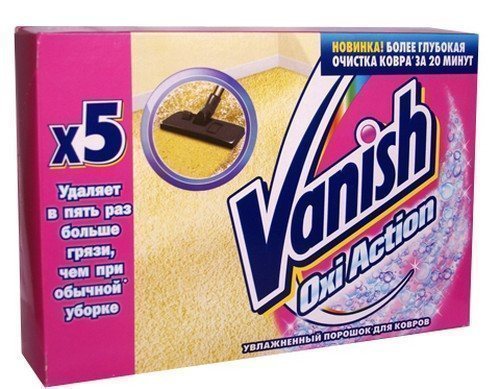Stainless steel household items are the most common in modern kitchens. They are valued for their durability, practicality and pleasant appearance. There is not a single housewife who does not use dishes, cutlery, a stove, a refrigerator, a sink, an extractor hood, and an electric kettle made of this popular alloy. But over time, it also needs regular cleaning. How to clean stainless steel dishes and electrical appliances correctly and with what is a question that worries housewives of all generations. Let's find the answer to it.
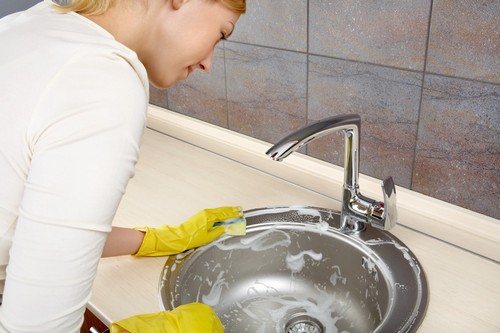
General recommendations for caring for stainless steel items
In order for household stainless steel products to please their owners with their ideal appearance for as long as possible, it is recommended to use proven cleaning products and healthy food products to clean them. Among them:
- kitchen napkins and microfiber cloths;
- sponges for washing dishes;
- lemon juice or citric acid;
- baking soda, dry mustard;
- activated carbon, ammonia;
- dish cleaning products;
- cleaning powders for stainless steel surfaces.
It is not recommended to experiment with steel brushes, metal sponges and polishing pastes for cleaning stainless steel, as they can scratch the coating and deprive the surface of its glossy shine and silver color. It is better to clean stainless steel cookware with a soft sponge and some detergent in hot water, rather than in the dishwasher.Do not be lazy to thoroughly wipe the surfaces with a dry towel after each cleaning; do not leave water stains on them, this can lead to the appearance of dark spots. To keep the coating clean and sparkling, gradually remove dirt from it, and use raw potato wedges to restore shine.
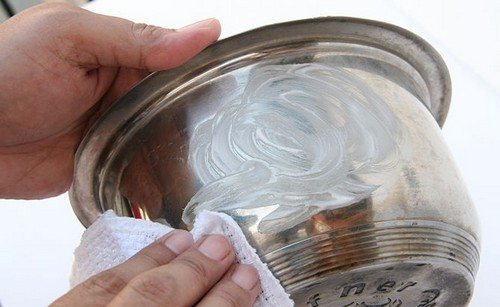
Effective ways to clean cutlery
Unlike the easy-to-use Teflon-coated ceramic cookware, cleaning stainless steel cookware can be a real torture if you don't care for it properly. To ensure that cutlery does not lose its original appearance, there are several effective ways to clean them from stains.
- Cleaning with stainless steel cleaner. Today, the assortment of stores offers various household chemicals that help effectively clean dishes from dirt. But not all of them are suitable for stainless steel. When purchasing, choose a product with a gentle composition, without chlorine and abrasives. Use it correctly - pour it onto the contaminated surface, wait 10 to 15 minutes, remove the residue with a damp sponge and then wipe thoroughly with a dry towel. Any glass cleaner that works on the same principle will help remove fingerprints and water stains.
- Cleaning dishes with baking soda. This is one of the easiest and most effective methods, since baking soda is always available in the kitchen arsenal. With its help, it is good to remove greasy stains and unpleasant odors from the surfaces of devices. Before treating the product with soda, you must wash it thoroughly under high pressure water and pat dry with a soft towel.Then generously sprinkle soda on its surface (0.5 cups of soda per 1 tableware) and leave it like that for several hours. If desired, baking soda can be mixed with water to form a paste-like consistency. After the specified time has passed, carefully wipe with a kitchen cloth.
- Cleaning dishes with activated carbon. This method will be especially effective if you didn’t keep track of the milk and it ran away. You can wash burnt dishes as follows: put crushed activated carbon in a container, fill it with water and do not touch it for about 15 minutes. Then wash well and remove stains with microfiber.
- Cleaning dishes with vinegar or citric acid. A small amount of vinegar is poured onto a kitchen sponge and the tableware is treated. Afterwards, the container is rinsed with water and wiped thoroughly. You can soak a frying pan or pan in a vinegar solution for 15 - 20 minutes, then wash thoroughly under the tap with detergent powder. As an alternative to vinegar, you can use a prepared solution of lemon juice (1 tablespoon of citrus juice per glass of water) and gently wipe the contaminated areas with it.
- Cleaning coffee grounds. Modern housewives use coffee grounds as a cleaning agent to clean all stainless steel items. Afterwards, wash off the coffee residues with running water.
- Cleaning with a solution of office glue and baking soda. We put dirty cutlery in a large container, fill it with water and add glue and soda in the ratio: 5 liters of water - 0.5 pack of soda - 100 ml of glue. Let the dishes boil for about 20 minutes, cool and rinse under the tap.
- Cleaning dishes with heat.Fill the contaminated pan with water, bring to a boil, add 2 tablespoons of table salt and leave for a couple of hours. Then drain the water and scrub off the soaked stains with a kitchen sponge.
- Cleaning dishes with dry mustard. Add dry mustard to a bowl of warm water, wait until it is completely dissolved, and clean the surfaces with the resulting solution. To get 100% results, you can clean surfaces with an old toothbrush or a small kitchen brush.
- Cleaning dishes using folk remedies. It involves cleaning stainless steel surfaces with potato wedges or potato broth, which is prepared as a regular dish. Afterwards, serve the potatoes to the table, and immerse the contaminated dishes in the resulting broth for 20 minutes.
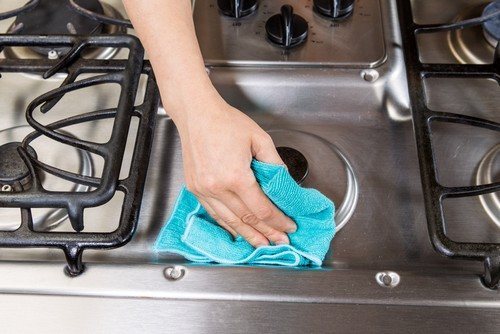
Useful tips for cleaning household appliances
To clean a gas stove and other household appliances, use the same products as for cleaning kitchen utensils. Moreover, if you use them daily, then you need to wash them constantly. It is enough to use standard cleaning mixtures for washing dishes. They are gentle and will not harm the coating. Several times a week, you can wipe the surfaces with professional cleaning mixtures in the form of a cream or gel, following the instructions for their use. To care for the glossy surface, use protective oil. It will not only preserve the surface for a long time, but will also provide a hydrophobic layer that will facilitate everyday maintenance of the equipment.
To clean stainless steel sinks, experts recommend using hydrogen peroxide, which performs cleaning and disinfecting functions.You need to combine one part of peroxide with 3 tablespoons of wine vinegar and wipe the sink with this solution. The most contaminated areas and traces of greasy stains can be removed with a nylon brush or scrubber.
You can clean the sink with hot water and bleach. After closing the drain, pour water into the sink and add one cap of bleach, leave for several hours so that the resulting solution can cope with greasy stains. Then flush the water and rinse the sink with cold water.
Caring for a stainless steel refrigerator will also not require much effort if you are not lazy and regularly wipe it from dust and small debris. To do this, you will need a chemical intended for stainless steel and a microfiber cloth. For a more economical option, you can use baking soda or lemon zest.
By following these simple tips for caring for stainless steel household appliances, you will preserve their perfect appearance, noble shine and impeccable sense of style for a long time.


